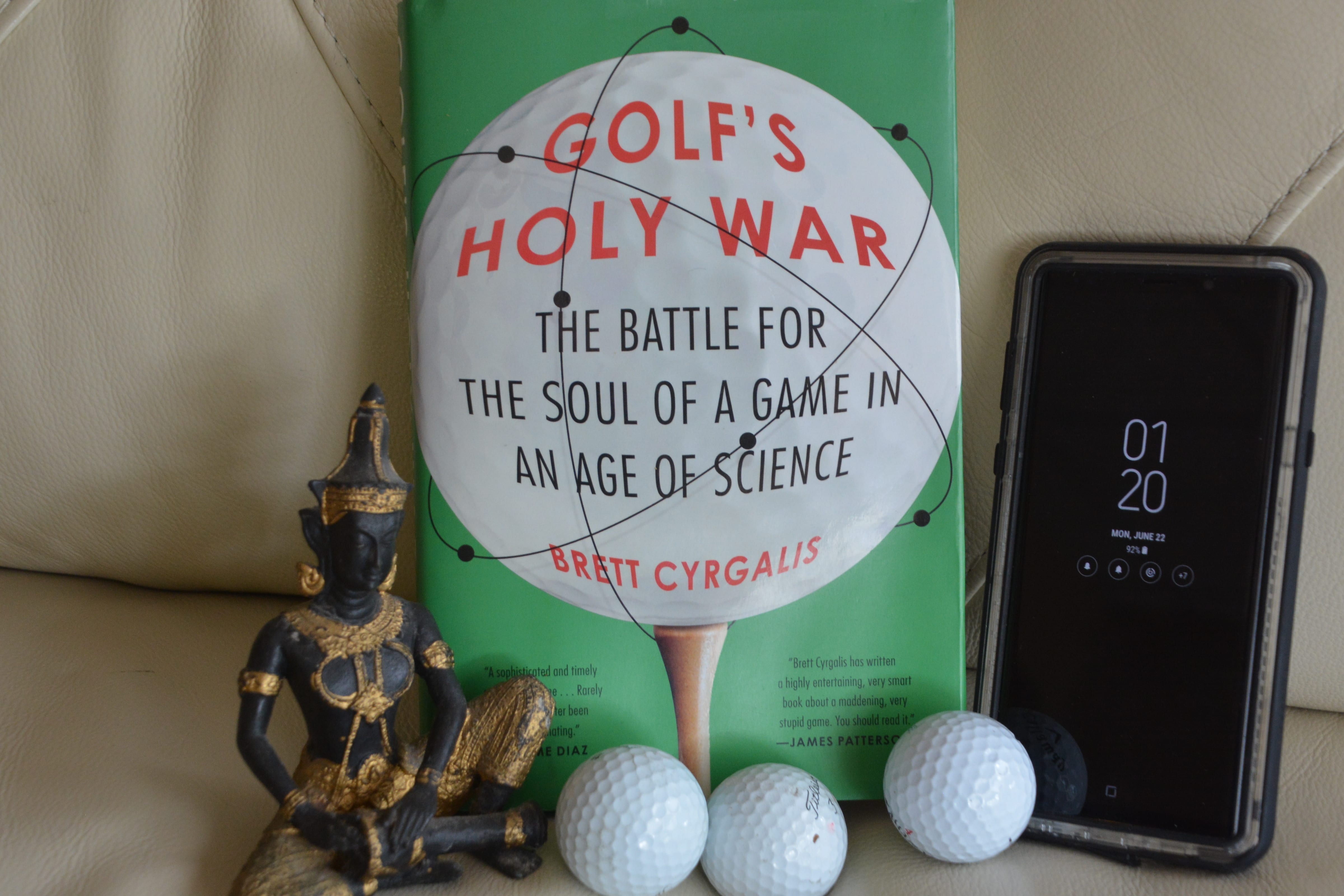I may have just read the best golf book ever penned. “Golf’s Holy War; the battle for the soul of a game in an age of science” was written by the young New York Post sportswriter Brett Cyrgalis, a guy raised on the Gold Coast of Long Island. A sign that a book will become an instant classic is that you’re reluctant to put it down.
As the title suggests, the book is about how science and its endless analytics have encroached upon the genteel, beautiful, mysterious aesthetics of the game.
Cyrgalis contends that golf’s unholy marriage between scientific analytics and business profiteering has slowly turned golfers into cyborg-like creatures plugged into every imaginable metric. including neurological brain mapping, REM sleep monitoring, blood levels heart rate and galvanic skin responses. You want spin ratio, smash factor, swing path data, your stats from 100 to 150 yards, you got it.
Cyrgalis does an impressive job of tracking down the founding fathers of golf’s scientific revolution. “The Golf Machine” was a book written by the madman engineering genius Homer Kelly, who has a long line of scientific-minded followers, including the likes of Ben Hogan, Bobby Clampett, the ever-entertaining Mac O’Grady, Michael Hebron, David Leadbetter, Nick Faldo and right up to the quirky Bryson DeChambeau.
Cyrgalis also lays out the spiritual side of this war quite nicely starting with Michael Murphy, who wrote the best-selling “Golf in the Kingdom.”
Murphy’s book, which was eventually converted into a feature-length film was really an autobiographical account of his quest to find the holy grail of golf. When I read his description of the lunch he had with Michael Murphy in a charming little café just north of San Francisco in Chapter Two, I began to realize this was no ordinary sportswriter and that he is the next generation of immersion journalists in the tradition of Gay Talese, Tom Wolfe, Truman Capote and Michael Lewis.
I could see that Cyraglis decided not to interview these guys but to hang with them for extended periods and soak in their totality. That is in essence what immersion journalism is all about and the gold standard of this style was Gay Talese’s Esquire article “Frank Sinatra has a cold.”
The conversation Cyrgalis had with Michael Murphy inevitably led to an amazing discussion of the Esalen Institute in Big Sur, which gathered together the likes of Fritz Perls, Alan Watts, Allen Ginsberg, Jack Kerouac and Hunter S. Thompson. Now, remember this is a golf book we’re talking about here.
My old friend Spalding Gray, who may have been America’s greatest and most anguished living mind, was a regular teacher at the Esalen Institute and I had always dreamed of going out there and finding my soul along the shoreline of Big Sur. If it was good enough for Henry Miller, it would certainly be good enough for me.
As he explores the religious roots of golf, Cyrgalis takes us up through writers and spiritualists like Fred Shoemaker (“Extraordinary Golf”) with his posh workshops for the rich and famous in Santa Barbara and Dr. Joe Parent’s “Zen Golf.”
I will grant you that in the chapter on the birth of sport psychology I was put off slightly since he featured the king of all sport psychologists Bob Rotella, who delights in telling us that he takes golfers that are healthy and makes them more healthy. This is an astounding demonstration of denial.
Cyrgalis follows Rotella down his primrose path by citing a host of other “positive psychology” gurus like Gio Valiante, Pia Nilsson and even Deepak Chopra, all of whom share with Rotella the embrace of the simple and naïve mantra to forget the past, deny the unconscious and do your best to think happy thoughts.
Apparently they have not heard the phrase “You may be through with the past, but the past ain’t through with you.” A friend of mine had gone to Rotella and when I asked him what he learned, he said “he told me to put on happy feet when I was putting.”
Golf reveals the unconscious no matter how much computer analytics or happy talk you throw at it.
Let’s use some immersion journalism to show you what I mean. I had the chance to play a round of golf with Cyrgalis this weekend. Little did I know that Cyrgalis is a one handicap golfer. He birdied one, almost aced two, and birdied four, seven, eight and nine. That put him 5 under par after nine holes and well on the way to maybe setting the course record at this historic and demanding golf course here on Long Island.
But how things change on the tenth tee. It is as if the air is sucked out of the present and the golfer finds himself living in the glorified future of a course record and/or a glorified record of his front nine.
Needless to say, Brett returned to earth, shot a 39 on the back nine and came in with a respectable 71. In Freudian terminology his central ego was not able to withstand the pressure of imagined fame.
“Golf’s Holy War” was an impressive first book filled with thorough research, fascinating stories and a book I did not want it to end. Brett Cyrgalis now stands at the doorway of future success and he’s about to experience a shift when the good press on this book comes out.
If he manages to overcome the pressure and high expectations that will surely be placed on his shoulders, then we will have been witness to the start of a writing career that will be comparable to a Gay Talese or Tom Wolfe journey.
If on the other hand, the soul-crushing world of success, fame and high expectations affect him the way it did on the back nine of my round with him, then his graceful flowing writing style will be threatened.
The soul of golf cannot be crushed by analytics, but the soul of a golfer (or a writer) is a vulnerable thing indeed. I hope that Cyrgalis is ready for the tsunami of fame that is about to befall him.




